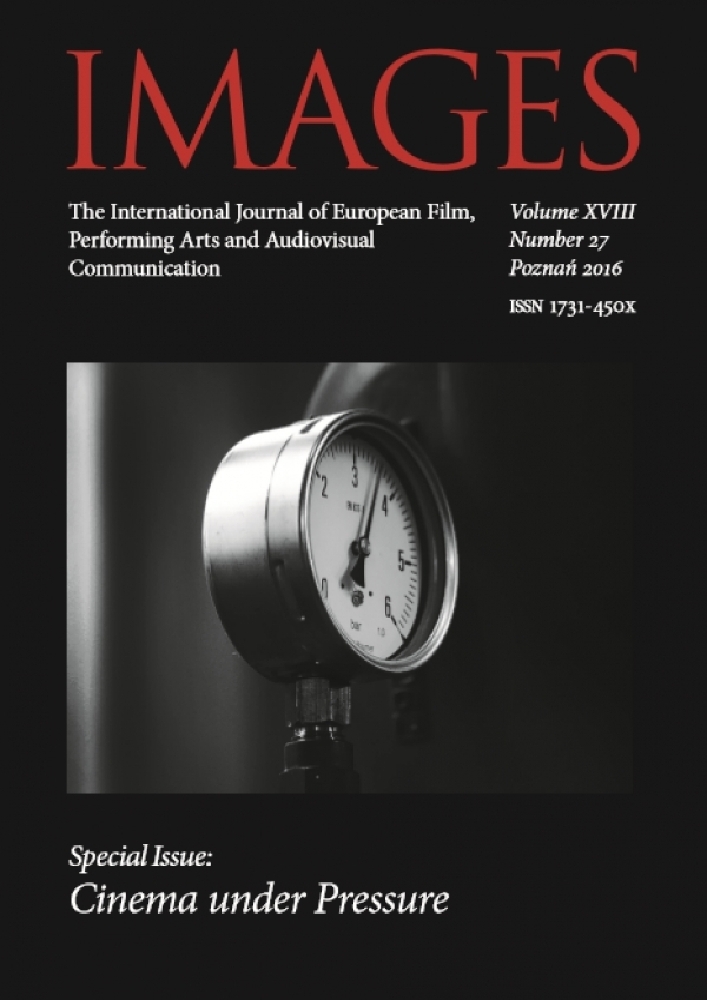Abstract
Satire on dogma? The strategy of subversion in Kevin Smith’s DogmaReligious themes which appear in the cinema in a fashion that differs from the classical view of Bible stories often become problematic for the audience, especially its more religious members, who find such movies blasphemous and sacrilegious. At the same time, it seems that the aim of many such works is not to act against religion, but rather to show the truths of faith in a new perspective. This kind of approach, described as a “strategy of subversion“ based on the affirmation by illusory negation, can be found in the way Kevin Smith created his Dogma (1999). The aim of this article is to examine those aspects of Dogma, which on the one hand undermine the dogmatic character of religion and the commercialization of the Catholic Church, and on the other, expose and emphasize the senses of faith and cultivating religion lying underneath the pop culture in a ostensibly profane form.
References
Agenor, 2011, Prochrześcijańskie przesłanie?, http://www.filmweb.pl/film/Dog-ma-1999-1423/discussion/discussion/Prochrześcijańskie+przesłanie,1644675>
[dostęp: 12.02.2016].
Bordwell D., Thompson K., 2010, Film Art. Sztuka filmowa, przeł. B. Rosińska, Warszawa.
Disney dumps Dogma: movie and protest proceed, 1999,
http://www.catholicleague.org/disney-dumps-dogma-movie-and-protest-proceed> [dostęp: 27.01.2016].
Dulles A., 1982, Survival of Dogma: Faith, Authority, and Dogma in a Changing World, New York.
Historia dogmatów, 2003, t. 4: Słowo zbawienia, pod red. B. Sesboüé J, tłum. P. Rak, Kraków.
Katechizm Kościoła Katolickiego, oprac. ks. M. Baranowski, Poznań 1994.
Kodeks Prawa Kanonicznego, 1983, rozdz. 4, kanon 992 http://www.trybunal.mkw.pl/Kodeks%20Prawa%20Kanonicznego.pdf> [dostęp: 20.02.2016].
Kornacki K., 2010, Wizerunek Boga i zaświatów w kinie współczesnym, „Ethos” nr 89.
Modrzejewska E., 1987, Typ człowieka Chrystusowego w kinie, w: Kino i religia. Ogólnopolskie Seminarium Filmowe, 26–29 maja 1987, Olsztyn–Warszawa.
Modrzejewska E., 2002, Inspiracja biblijna w kinie (rys historyczny), w:
Poszukiwanie i degradowanie. Sacrum w kinie, pod red. M. Przylipiaka i K. Kornackiego, Gdańsk.
Oświeciński R., 1999, Herezje i bluźnierstwa, http://www.film.org.pl/prace/herezje.html> [dostęp: 12.02.2016].
Pismo Święte Starego i Nowego Testamentu. Biblia Tysiąclecia, Poznań–Warszawa 1990.
Pitrus A., 2009, Kevin Smith i jego X-świat, „Kwartalnik Filmowy” nr 66.
Słownik terminów literackich, 1988, pod red. J. Sławińskiego, Wrocław.
Watanabe T., 1999, Chasing Catholicism: Kevin Smith was in search of his Catholic faith when he created “Dogma”. Now, others are after him, „Los Angeles Times”,
http://articles.latimes.com/1999/nov/10/entertainment/ca-31798> [dostęp: 20.02.2016].
Zydorowicz J., 2010, Między ikonoklazmem a ikonofilią. Symbole religijne jako arsenał sztuki współczesnej, „Przegląd Religioznawczy” nr 2, https://repozytorium.amu.edu.pl/bitstream/10593/8791/1/9.%20Jacek%20Zydorowicz.pdf> [dostęp: 15.02.2016]
License

This work is licensed under a Creative Commons Attribution-NonCommercial-NoDerivatives 4.0 International License.
